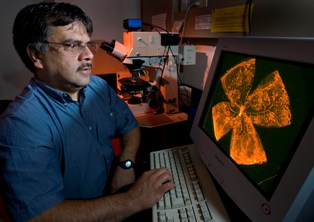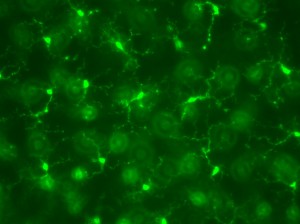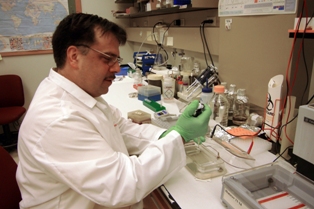- Retina Research Foundation
- About RRF
- Pilot Study Grants
- Grant Recipients 2025
- Samuel M. Wu, PhD
- Yingbin Fu, PhD
- Graeme Mardon, PhD
- Wei Li, PhD
- Yuqing Huo, MD, PhD
- Rui Chen, PhD
- Wenbo Zhang, PhD
- Curtis Brandt, PhD
- Lih Kuo, PhD
- Timothy Corson, PhD
- Jianhai Du, PhD
- Francesco Giorgianni, PhD
- James Monaghan, PhD
- Seongjin Seo, PhD
- Andrius Kazlauskas, PhD
- Erika D. Eggers, PhD
- Ann C. Morris, PhD
- Ming Zhang, MD, PhD
- Christine Sorenson, PhD
- Alex J. Smith, PhD
- Jeffrey M. Gross, PhD
- David M. Wu, MD, PhD
- Kinga Bujakowska, PhD
- Eric Weh, PhD
- Ching-Kang Jason Chen, PhD
- Jakub K. Famulski, PhD
- Thanh Hoang, PhD
- Georgia Zarkada, MD, PhD
- Eleftherios Paschalis Ilios, PhD
- Oleg Alekseev, MD, PhD
- Erika Tatiana Camacho, PhD
- Patricia R. Taylor, PhD
- Elizabeth Vargis, PhD
- Publications
- Grant Guidelines and Information
- Grant Application
- Grant Recipients 2025
- Research Programs
- Contact Us
- Giving
- RRF History
- Home
RRF Alice R. McPherson Chair at University of Wisconsin
Nader Sheibani, PhD (2006 to present)
Ophthalmology and Visual Sciences
University of Wisconsin
Madison, WI
Research Interests
Pathophysiology of Eye Diseases with Neovascularization
Dr. Sheibani showed that vitamin D receptor regulates the angioinflammatory phenotype of retinal endothelial cells. His team found CYP1B1 expression in retinal endothelial cells is vital in regulating iron levels, whose deficiency results in increased iron levels and oxidative stress. Adenosine receptors are important regulators of inflammatory and neurodegenerative processes. They showed these receptors are expressed in eyes with both wet and dry AMD, whose changes could contribute to AMD. Dr. Sheibani was involved with investigating the role of inflammatory processes in diabetic retinopathy. His team showed artesunate mitigates choroidal neovascularization in mice. Using network analysis and deep learning techniques, they reported a molecular network for detection and treatment of AMD. They reviewed the role of mast cells in AMD. Reported in: Cells (Jan 23), Int J Mol Sci (Jan 23), J Ophthalmic Vis Res (Feb 23), Diabetologia (Nov 23), Exp Eye Res (Nov 23), Pharmaceuticals (Nov 23), Cells (Dec 23).
Previous Research Projects
Regulation of Ocular Vascular Development and Neovascularization
Dr. Sheibani’s work focus on the mechanisms that regulate ocular vascular function. Using this knowledge, he is developing novel treatments. He recently showed intravitreal ocular safety of propranolol and its efficacy in attenuation of CNV. In collaboration with Dr. Zhang at Northwestern he demonstrated the utility of visible light OCT for measuring retinal oxygen metabolic response. In collaboration with Dr. Shah he showed the important role of mitochondrial carbonic anhydrases in high glucose-mediated toxicity of pericytes. He also published two review on functional role of inorganic trace elements in angiogenesis and one the importance of PECAM-1, eNOS, and endoglin axis in angiogenesis (reported in: IOVS (Dec 2015), LSA (Sept 2015), CROH (May 2015), JOVR (March 2015), Clin Sci (Aug 2015), and Physiol Rep (Jan 2015)).




